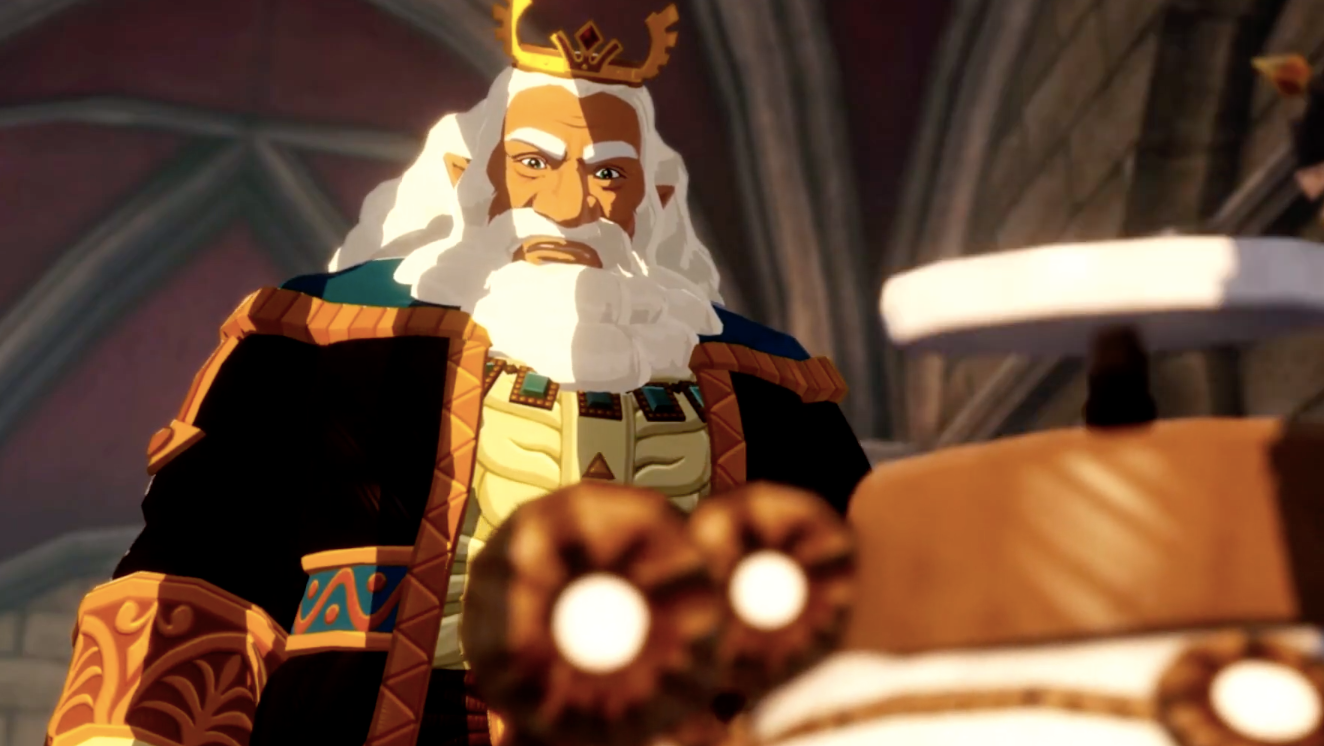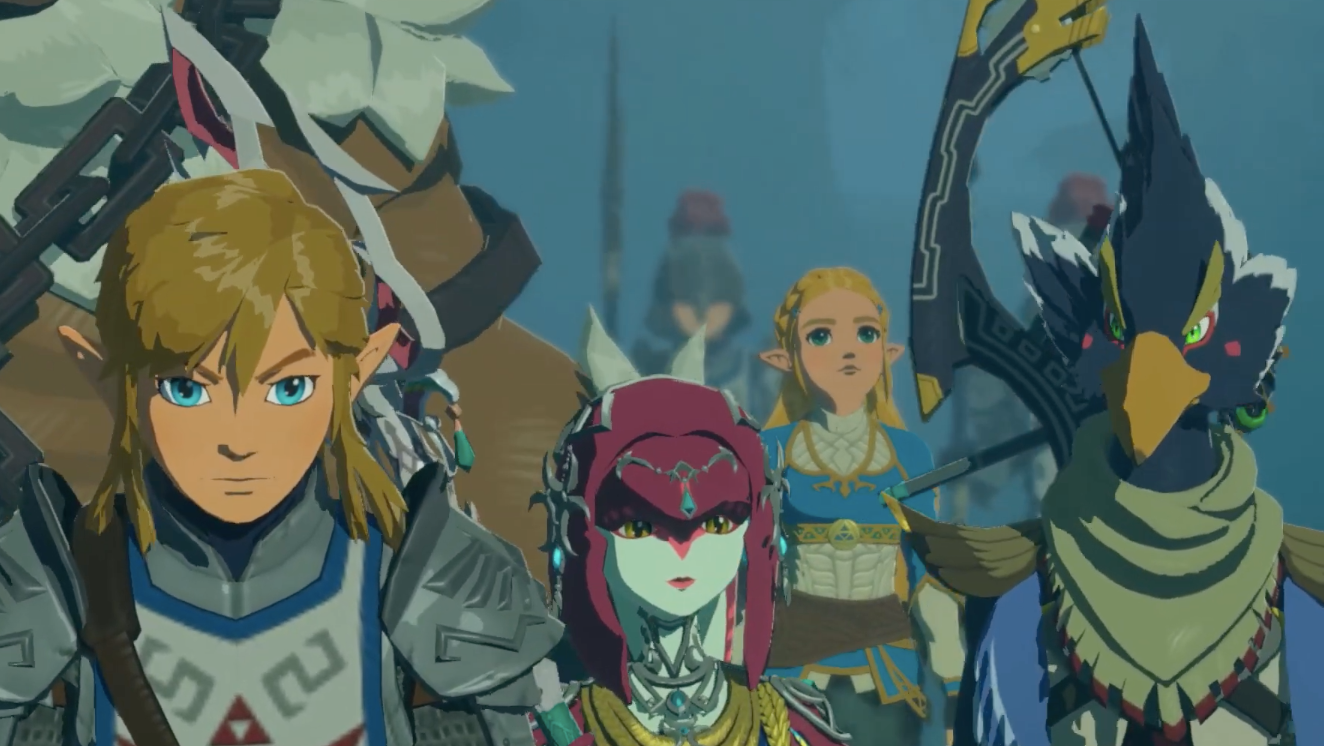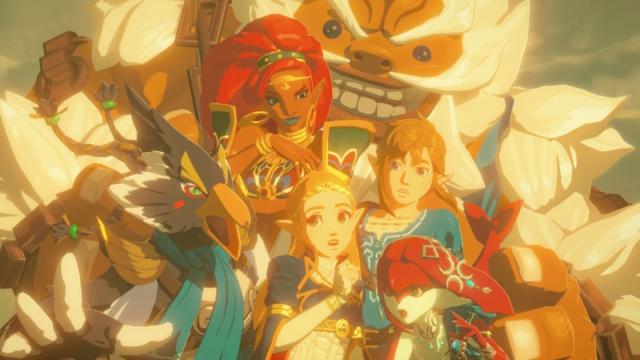Each entry in Nintendo’s Legend of Zelda franchise has been a discrete story following the Hero of Time and Hyrule’s legendary princess as they fight to keep the ultimate evil at bay. At the same time, all of the different games also fit together as pieces of a larger overarching narrative that spans multiple timelines and lifetimes for its central characters.
Unlike Nintendo’s first-party Zelda games, which have all traditionally featured jumps in time and space significant enough convey that their settings are meant to be seen as “new” places, Koei-Techmo’s Hyrule Warriors: Age of Calamity serves as a direct prequel to The Legend of Zelda: Breath of the Wild set only 100 years before the 2017 title. Age of Calamity’s true to its Dynasty Warriors (another Koei-Tecmo hack and slasher) roots and features little of Breath of the Wild’s focus on exploration and puzzle-solving. Instead, it details a history that adds impressive depth to a significant number of Breath of the Wild’s supporting characters and radically changes the shape of Zelda’s future.

Though you don’t technically need to have played Breath of the Wild to appreciate Age of Calamity, the new game is littered with a variety of allusions to its predecessor that only add weight and nuance to the plot when you’re able to pick up on them. Here, the ever-talkative Link’s not yet a mythic knight wielding the Master Sword, but merely one of Hyrule’s thousands of soldiers called upon to defend the kingdom against an onslaught of attacks from all manner of monsters and nefarious figures like the Yiga Clan.
The Hylians, the avian Rito, aquatic Zora, heat-resistant Goron, and all-female Gerudo are all generally aware of the existence of the primordial evil threatening their societies, but Age of Calamity zooms in on a point in their shared history when the respective societies weren’t yet fully united in their struggle to fend off the darkness. Rather than pushing Zelda herself into the backdrop as the franchise has often done in the past, the new story puts the princess right in the thick of the action as a playable character who wields her techno/magical Sheikah slate on the battlefield in addition to giving her much more to do with the game’s storyline.
Much to her father King Rhoam’s dismay, Zelda struggles with learning to master her own innate power to magically seal darkness away, and because the King sees that power as the key to protecting their world, he puts an inordinate amount of pressure on his daughter to focus solely on her studies. Few and far between as Rhoam and Zelda’s interactions are, theirs is one of Age of Calamity’s most interesting dynamics, as it spotlights how this particular incarnation of Zelda’s duty to protect the realm was not her only passion. Here, she’s a researcher who believes that unlocking the truths about the past is vital to understanding the future, a reality that Rhoam struggles to understand.

Age of Calamity’s story quickly turns into one of adventure, as Zelda, Link, and allies like Purrah of the Sheikah tribe embark on a journey across the land to battle demons and request assistance from the Kingdom’s many cultures in the coming war. All the while, the Hylian heroes are joined by a tiny, time machine modelled after one of Breath of the Wild’s massive Guardians, and it takes a keen interest in Zelda despite her not knowing what it is.
As seemingly short and simplistic a game as Age of Calamity is, it packs in a surprising amount of worldbuilding and lore not just through cutscenes and transitions, but also in the way that different characters fight and move across the map. Breath of the Wild gave you the impression that each of the four legendary Champions who controlled one of the mechanical Divine Beasts were part of a long-established line of pilots from their respective cultures who stepped up to the duty when time necessitated it. But Age of Calamity instead unpacks a more complicated history in which there’s discord amongst some of the different groups, and fated for greatness or not, each of Zelda’s Champions has to learn before they become vaunted heroes.
[referenced id=”1527878″ url=”https://gizmodo.com.au/2020/11/i-would-die-for-hyrule-warriors-age-of-calamitys-baby-guardian/” thumb=”https://gizmodo.com.au/wp-content/uploads/2020/11/10/ibbju2ppqubpujyycprw-300×168.gif” title=”I Would Die for Hyrule Warriors: Age of Calamity’s Baby Guardian” excerpt=”Things being the way they are, it didn’t seem likely that 2020 would follow in 2019’s footsteps in terms of ushering in new, fictional babies designed to capture the public’s heart. But then, Nintendo’s Hyrule Warriors: Age of Calamity demo came along and introduced a surprising bundle of joy into…”]
Though there’s still a fair amount of focus put on destiny, Age of Calamity very noticeably puts a lot of emphasis on the fact that the game’s heroes are all in the process of training and becoming more skilled versions of themselves. In most Zelda games, Link being the chosen one meant to save the world is a foregone conclusion, but Age of Calamity repeatedly reminds you that failure isn’t just an option — it’s what’s supposed to happen here because Breath of the Wild opens after Zelda and the champions are defeated by Calamity Ganon.
Calamity Ganon’s relative absence from Age of Calamity’s earliest chapters is one of the first curious things about the game that signals the major plot twists that develop as you get deeper into the story and are presented with Astor, a Yiga-associated sorcerer who serves as the new primary antagonist. Through Astor, the game deepens the history of the clan by detailing how it was founded by Sheikah separatists who saw Calamity Ganon’s power as something to be worshipped. The deeper you get into the endgame, the more it seems like the story’s meant to culminate in a final battle with Astor that you win before a subsequent battle with Calamity Ganon that you’re supposed to lose in order to put things in place for Breath of the Wild’s events to be set in motion.

But Age of Calamity pulls a rather impressive sleight of hand by borrowing a page out of the Russo Brothers’ handbook and dabbling in a bit of world-changing time travel. The tiny Guardian’s ability to create portals linking different points of time and space together becomes a crucial part of the story when the original champions, Urbosa, Daruk, Rivali, and Mipha are all saved from Calamity Ganon by Sidon, Yunobo, Riju and Teba, their time-displaced descendants who were first introduced in Breath of the Wild. By uniting the Champions from the future with their ancestors, the small Guardian is able to fundamentally alter the course of history, as their might combined with Link’s makes it possible for Zelda to properly seal Calamity Ganon away, an act that splits the timeline, and creates the potential for a new future.
It’s not so much that the events of Breath of the Wild no longer happened, but rather that they no longer define what’s next for The Legend of Zelda as a whole. Even though Age of Calamity initially seems simply like a supplementary title, by the end, you can see that the game could very well be the groundwork for Nintendo’s upcoming Breath of the Wild sequel that the studio’s been tight-lipped about. If Age of Calamity’s any indication, Hyrule’s next chapter might not simply be one about Link journeying across Hyrule on a lone quest to save the world but instead tell a familiar, but fresh tale about a different sort of hero using their skills to fight Ganon, who only ever stays gone but for so long.
